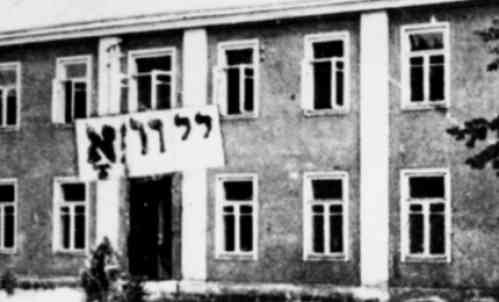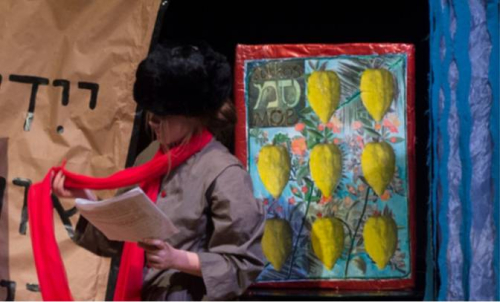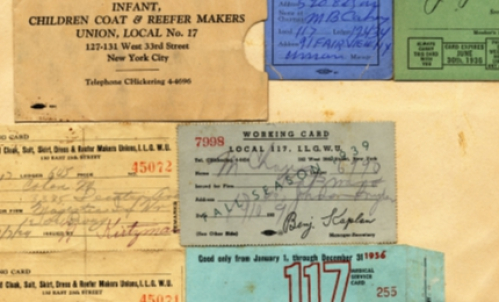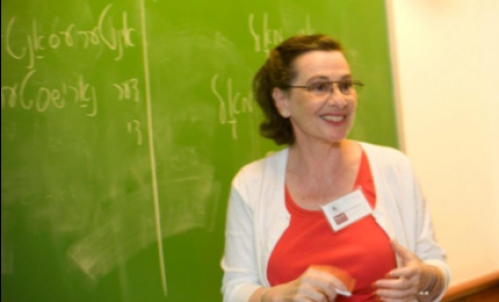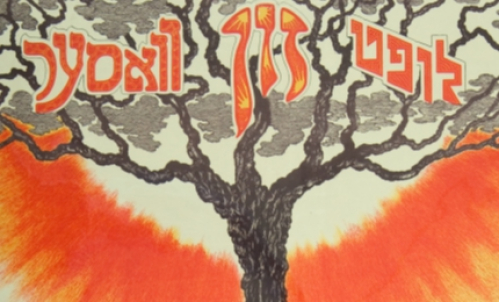2022 Winter Program
Course List · January 4 – 21, 2022
Conquering the Space: Symbolic Topography of the Former Warsaw Ghetto
Instructor: Elżbieta Janicka
Burnt down and razed to the ground by the German Nazis, non-exhumed after the war, the former Warsaw Ghetto site is at once a symbol and the real thing itself. It symbolizes and incarnates Jewish presence, identity, history, Jewish life and death. It symbolizes and incarnates the ultimate consequences of antisemitism. Its central location—in the heart of Warsaw that is the heart of Poland—symbolizes and incarnates the central position of the Holocaust in the country’s social fabric.
What do Poles who exert the control over this space make of this content? What were the stages of its symbolic rendering? How does the former Warsaw Ghetto site look today and what does its present shape mean? Since—as with any cultural landscape—it can be apprehended in terms of cultural text, what narrative patterns emerge from its urban design, memorials, commemorative plaques, murals, names of buildings, streets and squares? Whose and what perspective do they convey?
While drawing on a lavish iconography we will:
— outline the prewar, wartime and postwar history of the site;
— examine four basic narrative patterns imprinted in the former Warsaw Ghetto ground;
— ask the question about the reasons of their persistence and intensifying repetitiveness between the 2000 revelation of Polish participation in the Holocaust and the 2015 authoritarian turn in Polish politics.
Our reading of the former Warsaw Ghetto space will be informed by the observation that the space is at once a product and a means of production of social relations. We will try to figure out whether the discussed phenomena belong to the realm of the memory of the past or rather constitute the continuation of the past: namely of antisemitic domination, exclusion and violence. Our question will be whether the observed spatial transformation may be perceived as representative of a broader process that led to the collapse of liberal democracy in this center of Europe.
Grace Paley and Philip Roth: Writing Jews in America
Instructor: Anita Norich
Co-sponsored by Lilith
What do Grace Paley and Philip Roth have in common? These contemporary—often controversial—writers pose questions about what it means to be a Jew in America, how Jewish life has changed, where it might be heading. Both revel in irony. And both have sometimes been described—incorrectly, as this course will argue—as self-hating, heretical or, at best, outlier Jews, Paley for her stand on Israel, Roth for his depiction of the Jewish family. Readers have been passionate about their preference for one or the other of these writers. We will consider why this is so as we examine the themes, characters, and narrative devices in their stories.
Reviving European-Jewish Thought and Culture after 1945
Instructors: Elisabeth Gallas and Enrico Lucca
In the aftermath of World War II and the Holocaust we witness a plethora of Jewish initiatives to rebuild, recreate and revive a Jewish cultural and spiritual life in Europe and in the new centers of America and Israel. This process entailed transfers and shifts—both of objects and knowledge—as well as the need to adjust and question traditional perspectives, institutions and practices.
In the seminar we will look at actors and institutions that were involved in the restoration of Jewish culture and thought in the post-war period (e.g. Salo W. Baron, Nahum Glatzer, YIVO). Having to cope with the massive scale of destruction, loss and the void left by the Holocaust, they tried to establish some sense of continuity with the past but at the same time needed to acknowledge the fundamental rupture that had occurred in Jewish existence. This tension marked all their activities and will be used as a starting point for our discussion.
Reading material including primary sources will be provided digitally for each of the six sessions of the seminar. They will help us to understand the way Jewish culture and thought were revived and in what way European-Jewish traditions vanished, were transformed or conserved throughout this process.
The Price of Whiteness: Jews, Race, and American Identity
Instructor: Eric Goldstein
What has it meant to be Jewish in a nation defined around the categories of “black” and “white”? The millions of Jewish immigrants who came to the United States from Central and Eastern Europe during the 19th and early 20th centuries had lived as outsiders in their countries of origins. In their new home, these immigrants also faced various forms of discrimination and marginalization, but because power and privilege in the U.S. were significantly shaped by the color line, European Jews came to occupy a more ambiguous place in American life, one that often combined the roles of “insider” and “outsider” in confusing and contradictory ways.
Although a process of acculturation led to European Jews and their descendants winning solid acceptance as part of the white majority by World War II, the contradictory nature of their group identity nonetheless continued to inspire debate, not only about their place in the American world of difference, but also about the very meaning of "difference" in American life. By the late 20th century, the increasing number and visibility of Jews of color in the United States raised additional questions about the relationship between Jewishness, diversity, and whiteness. This course will explore the history of Jews’ uncertain place in America’s culture of race and difference from the period of mass immigration through the contemporary movement for racial justice.
The Many Realities of Bruno Schulz
Instructor: Jonathan Brent
Bruno Schulz has long been understood to be a visionary painter and writer. His biographer, Jerzy Ficowski, has described Schulz as a “myth-maker,” able to withdraw hidden embryonic states out of a culmination of the dynamics of the ordinary. This course will explore, as Schulz himself put it, “the mutterings of mythological delirium” found in his work through close readings of Schulz’s two fictional masterpieces, Street of Crocodiles, and Sanitorium Under the Sign of the Hourglass, supplemented with a selection of Schulz’s pictorial and graphic art.
What is the purpose of Schulz’s myth(s)? Does his myth-making provide a way out of stifling “reality” for a possibly deranged Jewish genius on the fringes of Polish-Jewish culture or does it take the reader more deeply into that reality? We will discuss the idea of “ordinary reality” as it had developed in the thinking and art of the European avantgarde of the 19th and 20th centuries and its role in the making of Bruno Schulz’s mythological kingdom.
History of the Yiddish Language
Instructor: Dovid Katz
Focusing in on the origins of Ashkenazic civilization, this course will begin by conceptualizing early Yiddish in a society with three Jewish languages (Hebrew, Aramaic, Yiddish) and will pivot to the development of Yiddish per se, alongside west-to-east migration precipitated by the Crusades and other episodes of violent intolerance.
The cultural dialectology of Yiddish and Eastern Ashkenazic history will be discussed, with an overall East European tolerance punctuated by massacres and false messiahs. These were followed by Hasidism, demographic explosion, and the rise of modern literary genres, followed by late 19th century political polarization linked to contemporary revolutionary movements ranging from revolution at the left, to Zionism at the nationalist end of the spectrum, all of them giving rise to a major new European literature in the folk language. The twentieth century creation and achievements of modern Yiddish institutions, Yiddish-Hebrew battles, and the internal conflicts centered on religion, politics, culture, or aspects of dialects, vocabulary, pronunciation and spelling. Discussion of the sociology of Yiddish with reference to the recurring phenomena of love and hate for the language. Twenty-first century Yiddish debates. The advent of a new Hasidic period: the final session will include a survey of current Hasidic magazines (and video clips) alongside analysis of the contemporary secular scene.
Jews, Anarchism, and the Pursuit of Radical Freedom
Instructor: Tony Michels
In the nineteenth and twentieth centuries, anarchism captured the imaginations of many Jewish workers in the United States, England, Russia, and other countries. Anarchists played a formative role in the early years of Jewish radicalism and maintained an activist presence for decades to come. There were larger Jewish political movements, but anarchists played a particularly notable role in upholding the ideal of individual liberty against all forms of tyranny, including those on the political left.
Who were the anarchists? What kind of society did they wish to create? What did they achieve? And what are their legacies? This course will explore these questions by focusing on the ideas, politics, and culture of Jewish anarchists within the broad context of modern Jewish politics. We will examine such topics as Jewish nationalism, the Russian Revolution, morality, violence, and free will. And, finally, we will delve into Yiddish literature and the role anarchists played in its development.
Jews and Science Fiction
Instructor: Ilan Stavans
Jewish science fiction is fiction written by or about Jews, or with an expressed Jewish sensibility, addressing scientific, technological, futuristic and speculative themes. This course, nurtured by an assortment of visionaries from multiple diasporas (Europe, Russia, the U.S., Israel, Argentina, etc.) explores the way Jews have used the hard-core tradition to explore time, space, and themselves. Participants will do contextual and close readings of works by Itzjok Leib Peretz, Sholem Aleichem, Isaac Bashevis Singer, Stanislaw Lem, Jorge Luis Borges, Theodor Herzl, Harry Turtledove, Michael Chabon, Ruthanna Emrys, Isaac Asimov, Stan Lee, Harlan Ellison, Philip Roth, Angelica Gorodicher, Jerry Siegel and Joe Shuster, Bernard Malamud, and others. The range of material goes from the biblical prophets, the Sheol, and Merkabah mysticism to false messiahs, doppelgängers, Chelm, Zionism, galactic travel, Superman, AI, and disquisitions on Olam ha-Bah.
